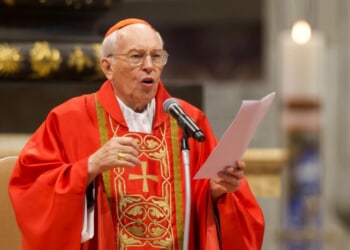
In Abundance, published in March, journalists Ezra Klein and Derek Thompson outline a vision for material progress aimed at specific goals—such as increasing housing production in San Francisco, expanding green energy, and completing California’s high-speed rail project. They argue that well-intentioned environmental laws, like the California Environmental Quality Act (CEQA), have instead created red tape and endless litigation that slow progress.
It’s encouraging to see prominent progressives reject typical zero-sum rhetoric. Yet Klein and Thompson overlook the deeper government-created barriers to growth. Their focus on boosting housing and green energy production ultimately advances a political agenda centered on creating more unionized construction jobs—while downplaying how the public sector’s monopoly over key parts of modern life stifles individual opportunity.
Finally, a reason to check your email.
Sign up for our free newsletter today.
In his 1962 book Capitalism and Freedom, economist Milton Friedman outlined a pro-growth vision that Klein and Thompson would do well to consider. While Abundance focuses narrowly on specific projects, Friedman’s vision is far broader. For him, true abundance flows from decentralized experimentation, deregulation, and the empowerment of human capital—systematic principles that, if applied, would demand far more transformative changes to government.
No priority was higher for Friedman than cultivating a workforce equipped with the analytical and emotional skills to handle adversity, pursue lifelong learning, and adapt to ever-changing market conditions. To advance this vision, he advocated privatizing many local government functions—from K–12 education to transportation, hospitals, and waste collection.
Under such a system, powerful urban public-sector unions would lose influence, as market competition would force private providers of these services to prioritize efficiency, experimentation, and innovation. The result would be a more dynamic, prosperous environment. One benefit would be giving the next generation of urban youth greater opportunity to thrive.
Klein and Thompson recognize some of the regulatory barriers that block growth—most notably environmental laws like CEQA—and they deserve credit for challenging parts of their own coalition’s orthodoxy. Yet their focus on targeted goals like housing and green energy underemphasizes the deeper political forces that have made such progress so difficult to achieve. They give comparatively little attention to the role of entrenched public-sector interests, especially unions, in shaping the very regulatory and budgetary environment that has slowed growth for decades.
This emphasis limits how much abundance their approach can actually deliver. The authors assume, for example, that building more housing and investing in infrastructure in highly productive, technologically dominant places like San Francisco will expand economic opportunity for the middle class. In reality, the biggest beneficiaries of any construction boom in these expensive cities would be recent graduates of America’s elite universities, who, working in well-remunerated tech jobs, might now find it easier to afford housing. While they may appear “middle class” based on their current salaries, their long-term earnings trajectories tell a different story.
Average Americans would gain little from a housing boom in Boston, Portland, San Francisco, or Seattle because most were never prepared in their youth to thrive in the modern skills economy. Pouring green concrete with low carbon emissions does nothing to address this deeper problem. Only more systemic reforms—like expanding school choice and deregulating local services, as Friedman envisioned—can begin to close that divide.
Friedman’s famous video —channeling Leonard Read’s classic essay “I, Pencil”—illustrates a broader principle of how true abundance is created. Nobody knows how to make a pencil on his own. Yet through decentralized trial and error, and the incentives provided by free markets, we learned how to produce it efficiently. What individual in government is wise enough to lead us to abundance? Friedman’s answer was simple: he would hand that so-called wise leader a pencil—and remind him that prosperity can’t be planned into existence.
Klein and Thompson’s vision also fails to address the real causes behind the “scarcity” coalition that resists abundance—chiefly, the excessive government regulations that failed many American workers. Much of the backlash against globalization—which has, in fact, been a major driver of abundance—stems from dissatisfaction with how the economy has evolved over the past 40 years. Manufacturing workers in the Rust Belt, for example, struggled to adapt to two key forces of globalization: free trade and immigration. Part of the reason was that they had been poorly served by public institutions operating under monopoly rules, leaving them unprepared for change. These displaced workers, in turn, demanded that their elected leaders erect new barriers to protect jobs, through tariffs and immigration restrictions.
Had the United States enacted Friedman’s privatization agenda in the 1960s, more American manufacturing workers might have been better equipped to adjust to the factory closures of the 1970s and 1980s. The nation’s economic trajectory might have looked very different.
Why do Klein and Thompson sidestep so much of Friedman’s broader deregulatory agenda? Likely because they recognize that the Left’s political base—public-sector workers—would bear the costs of the reforms required to achieve true abundance. But perhaps the authors should have been willing to grant Friedman a single blue city to test his ideas. If given the choice, the people of Baltimore just might prefer Friedman’s abundance agenda over Klein and Thompson’s.
Photo by Jon Hargest/South China Morning Post via Getty Images
City Journal is a publication of the Manhattan Institute for Policy Research (MI), a leading free-market think tank. Are you interested in supporting the magazine? As a 501(c)(3) nonprofit, donations in support of MI and City Journal are fully tax-deductible as provided by law (EIN #13-2912529).
Source link















